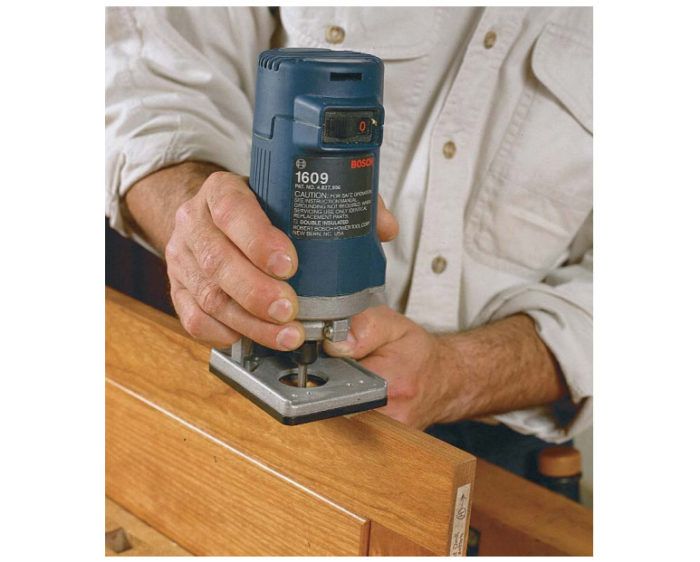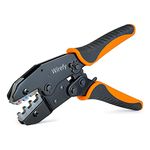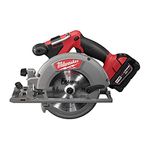Laminate-Trimmer Survey
Portable, versatile and convenient, these small routers will trim more than laminate.

Synopsis: This tool survey compares the specifications, features, and performance of seven small laminate trimmers that range in price from $125 to $250. The author discusses various base options, and describes specific techniques and useful accessories for trimming laminate.
As a remodeling contractor who does a lot of plastic-laminate countertops, I’ve used a PorterCable 7310 laminate trimmer for years, and together, we probably had trimmed miles of countertops. Just the other day, though, I accidentally knocked the trimmer off a countertop. It wasn’t the first fall the tool had taken, but it was the worst. When I switched it on, the little beast coughed some sparks and screeched to a grinding halt.
I did some quick exploratory surgery, and if the trimmer wasn’t completely dead when I started, it was when I finished. So I tossed the pieces into the dusty recesses under my workbench and set out to review the laminate trimmers currently on the market.
Laminate trimmers are designed to trim the overhanging edges of glued-down pieces of plastic laminate. But that doesn’t mean they can’t be used for other things. Trimmers essentially are scaled-down routers, and their convenient, one-hand size makes them ideal for many light weight routing operations, such as cutting shallow mortises for cabinet hinges or shaping the edges of trim boards with small round over bits. Trimmers are also the recommended tools for routing kerfs for weather stripping or for cutting openings in drywall for things such as electrical outlets and recessed light fixtures. And because they have such small bases, laminate trimmers can go where grown-up routers won’t fit.
Power is not a priority
With laminate trimmers, power is not necessarily a priority because usually all you’re cutting is a thin layer of plastic laminate. But power is important if you use the tool for more than trimming laminate. Although a laminate trimmer will drive any 1⁄4-in. shank router bit that will fit through the hole in the base (typically 1-in. dia.), bits that hog off a lot of wood will strain the motor.
To do a comparison test, I chucked a 1⁄4-in. straight-cutting router bit in each trimmer and used it to bully my way through a 3⁄4-in. pine furring strip in one pass. All the motors made the cut, but the 4-amp and lower ones really complained. I wouldn’t use these tools for anything but trimming laminate. Among the three 5.6-amp big boys, the DeWalt tool cruised through with the least effort, making it the choice trimmer for bigger jobs, such as chamfering trim boards.
Remove the base to change bits
Accessing the collet to change bits in trimmers is easier if the base is removed. But how easy is it to remove the base? The Bosch and Skil bases must be loosened with a screwdriver or a hex wrench respectively. The Porter-Cable 7310 and Hitachi bases come off by removing a hand-tightened knob, but as the knob comes loose, so do a washer, a spring and the base. You have to be careful not to lose any pieces. The bases of the Porter-Cable 310 and the Ryobi slide off by hand-loosening a base-lock knob. With DeWalt’s trimmer, you flip a lever to remove the base. It doesn’t get any easier.
For more photos and details, click the View PDF button below:
Fine Homebuilding Recommended Products
Fine Homebuilding receives a commission for items purchased through links on this site, including Amazon Associates and other affiliate advertising programs.


All New Bathroom Ideas that Work

Milwaukee M18 Fuel 18v Cordless Circular Saw (2730-22)

























